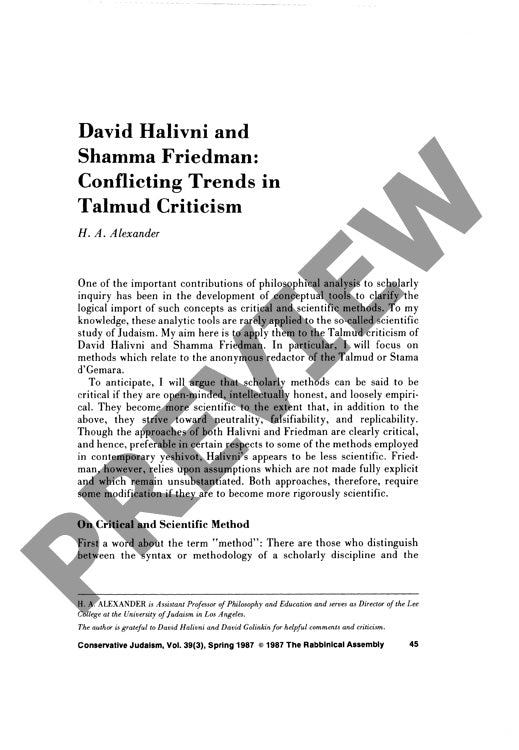David Halivni and Shamma Friedman Confli
Couldn't load pickup availability
The quest to understand how the Talmud's anonymous redactors shaped Jewish law has spawned two influential yet conflicting methodologies from David Halivni and Shamma Friedman. Their approaches to analyzing the Stama d'Gemara (anonymous editorial layer) reveal a fundamental tension between critical and scientific scholarly methods in Talmudic research. Critical methods demand open-mindedness, intellectual honesty, and loose empiricism, while scientific approaches additionally require neutrality, falsifiability, and replicability. Comparative analysis shows that while both scholars transcend traditional yeshiva approaches, their methodologies face distinct challenges. Halivni's comprehensive exegetical system, though extensively justified, compromises methodological neutrality by prioritizing exegesis over source analysis, relies on unfalsifiable assumptions about authorial intent, and lacks replicability due to its dependence on individual scholarly expertise. Friedman offers more objective stylistic and textual criteria for isolating Amoraic passages, achieving greater scientific rigor through neutrality, falsifiability, and replicability. However, his framework insufficiently substantiates core assumptions about the Stama's role and motivation. Despite these limitations, both approaches represent progressive research programs with expanding explanatory power for resolving difficult Talmudic passages. Moving toward greater scientific rigor will require modifications to develop empirical understanding of the Stam's editorial motivations and methods.

More Information
-
Physical Description
-
Publication Information
Published 1987
ISBN
-
Publication Credits
H. Alexander

